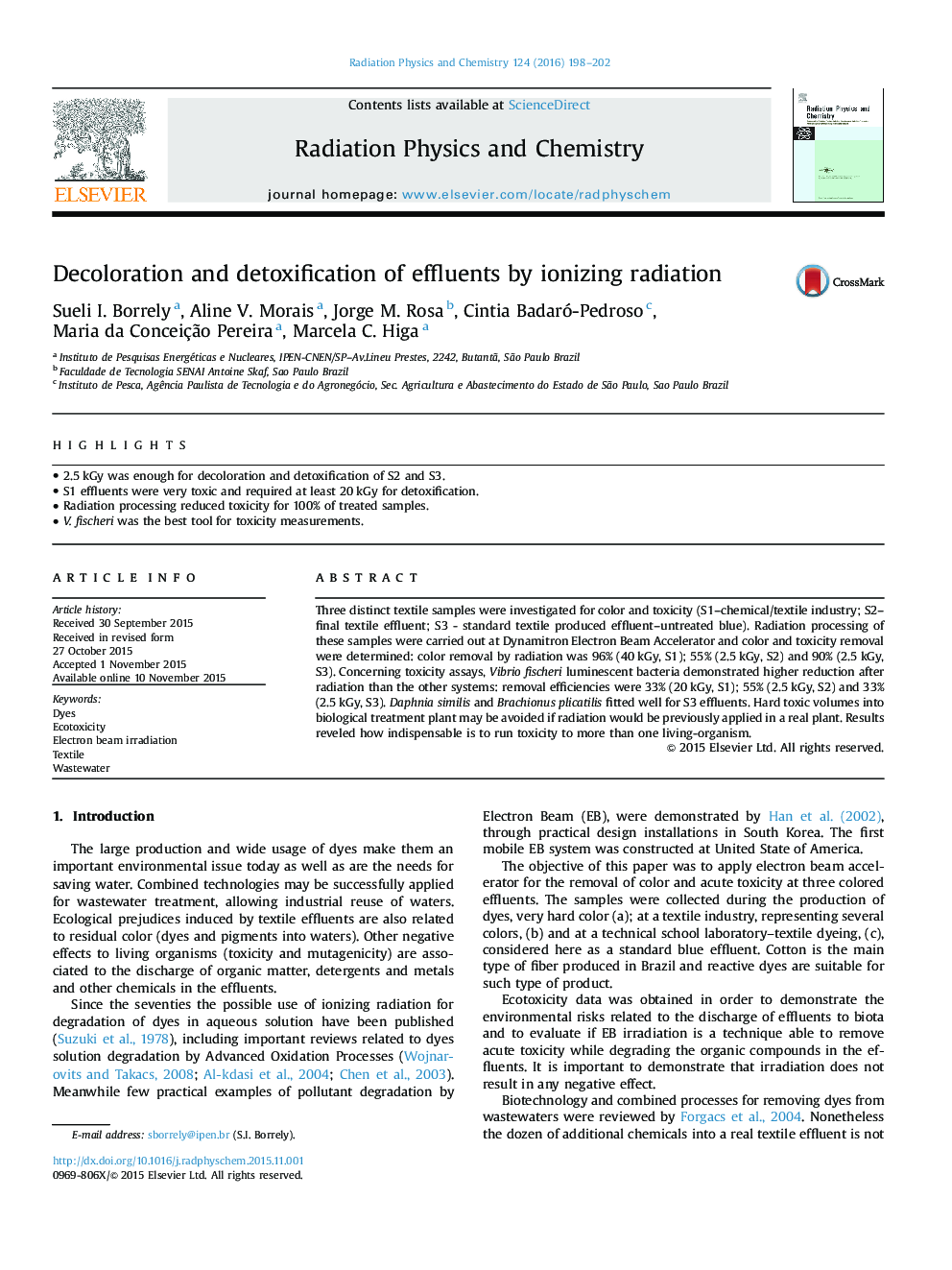| Article ID | Journal | Published Year | Pages | File Type |
|---|---|---|---|---|
| 1891042 | Radiation Physics and Chemistry | 2016 | 5 Pages |
•2.5 kGy was enough for decoloration and detoxification of S2 and S3.•S1 effluents were very toxic and required at least 20 kGy for detoxification.•Radiation processing reduced toxicity for 100% of treated samples.•V. fischeri was the best tool for toxicity measurements.
Three distinct textile samples were investigated for color and toxicity (S1–chemical/textile industry; S2–final textile effluent; S3 - standard textile produced effluent–untreated blue). Radiation processing of these samples were carried out at Dynamitron Electron Beam Accelerator and color and toxicity removal were determined: color removal by radiation was 96% (40 kGy, S1); 55% (2.5 kGy, S2) and 90% (2.5 kGy, S3). Concerning toxicity assays, Vibrio fischeri luminescent bacteria demonstrated higher reduction after radiation than the other systems: removal efficiencies were 33% (20 kGy, S1); 55% (2.5 kGy, S2) and 33% (2.5 kGy, S3). Daphnia similis and Brachionus plicatilis fitted well for S3 effluents. Hard toxic volumes into biological treatment plant may be avoided if radiation would be previously applied in a real plant. Results reveled how indispensable is to run toxicity to more than one living-organism.
